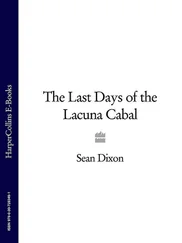Sean Martin - The Knights Templar
Здесь есть возможность читать онлайн «Sean Martin - The Knights Templar» весь текст электронной книги совершенно бесплатно (целиком полную версию без сокращений). В некоторых случаях можно слушать аудио, скачать через торрент в формате fb2 и присутствует краткое содержание. Год выпуска: 2004, ISBN: 2004, Жанр: История, на английском языке. Описание произведения, (предисловие) а так же отзывы посетителей доступны на портале библиотеки ЛибКат.
- Название:The Knights Templar
- Автор:
- Жанр:
- Год:2004
- ISBN:1-904048-28-5
- Рейтинг книги:3 / 5. Голосов: 1
-
Избранное:Добавить в избранное
- Отзывы:
-
Ваша оценка:
- 60
- 1
- 2
- 3
- 4
- 5
The Knights Templar: краткое содержание, описание и аннотация
Предлагаем к чтению аннотацию, описание, краткое содержание или предисловие (зависит от того, что написал сам автор книги «The Knights Templar»). Если вы не нашли необходимую информацию о книге — напишите в комментариях, мы постараемся отыскать её.
The Knights Templar — читать онлайн бесплатно полную книгу (весь текст) целиком
Ниже представлен текст книги, разбитый по страницам. Система сохранения места последней прочитанной страницы, позволяет с удобством читать онлайн бесплатно книгу «The Knights Templar», без необходимости каждый раз заново искать на чём Вы остановились. Поставьте закладку, и сможете в любой момент перейти на страницу, на которой закончили чтение.
Интервал:
Закладка:
In his speech, Hugues described the origins of the Order and the rule by which they lived: attending the offices; communal meals taken in silence; plain clothing; no women. Each brother swore vows of poverty, chastity and obedience upon entering the Order. As the brethren were frequently called out of the Temple on knightly business, they were each allowed one horse (although this was later increased to three), and a handful of servants. When away from the Temple, recitation of paternosters replaced hearing the offices. Knights and servants alike were under Hugues’ command, with the whole order being answerable to the Patriarch of Jerusalem.
After some debate, the Council, under Bernard’s supervision, drew up what became known as the Latin Rule of the Templars, which was based on the rule described by Hugues in his speech. It consisted of 73 clauses and regulated every aspect of Templar life. In addition to keeping the observances that the Order was already following, the Latin Rule advised the brethren how to admit newcomers to the Order, and how they should be vetted before being sworn in; at what age newcomers could join (boys being advised to wait until they were old enough to bear arms); how long brothers could serve for (which was usually a fixed term before allowing them to return to secular life if they so wished); how to reprimand miscreants and what offences would lead a brother to be expelled from the Order (such as deserting the battlefield, leaving a castle without permission or via an unauthorised exit), and so on. Knights were to wear white habits, to signify chastity and purity, while sergeants and squires were to wear brown or black (it must be remembered that the majority of Templars were not knights, but those who worked in the elaborate support network in the West that allowed them to remain on military duty in the East). The brethren’s clothing and the bridles of their horses were to be unostentatious, avoiding such concessions to fashion as pointed shoes with laces and long hair. The Rule demanded short hair with a monk’s tonsure; beards were mandatory.
There were two meals a day, around noon and then again at dusk, which were to be communal and silent, punctuated only by a reading from the scriptures. Meat was to be eaten only three times a week. No one was to get down from table unless there was a disturbance amongst the horses, or there was an impending attack. Physical relations with women were prohibited (although married men were admitted to the Order, provided they had their wives’ consent). A yet more serious a crime was homosexuality, which was seen as being as bad as killing a fellow Christian. Idle talk was forbidden, with brethren expected to spend their free time maintaining the horses, equipment and clothing, or spending time in prayer.
Naturally, the Fathers gathered at Troyes had a great deal of clerical experience between them, but very little of campaigning in Outremer, so the Rule was more monastic than military, being principally concerned with the spiritual welfare of the Order’s brethren. (It does make a few concessions to the actual physical conditions in the East, by allowing the brothers to wear linen shirts in the summer instead of the more customary European woollen equivalent.) Whatever shortcomings there were in the original 1129 Rule, they would later be rectified in the 1160s, and then again in the 1260s. By the time of the Order’s downfall, the Rule had grown to contain 686 clauses.
Daily life in a Templar preceptory was much the same as that of a Western monastery.The day would begin (during the summer months) with matins at 4:00am, which comprised the saying of 13 paternosters. The brothers were then permitted a brief sleep until the division bell summoned them to prime at 6:00am, when the first mass of the day was said. Terce was at 8:00am, and sext at 11:30am, which was followed by the first meal of the day. Usually the knights ate first, followed by the sergeants. Nones was at 2:00pm, followed by vespers at 6:00pm.The evening meal would then be taken, with the final office of the day, compline, being said around 8:00pm. As the winter months brought shorter daylight hours, the offices would be compressed so that matins would always begin after first light, and compline would similarly occur around the onset of twilight.
‘A Certain New Monster’
When Hugues de Payen returned to Outremer after the Council of Troyes, he did so as the head of an order which was now in a greatly enhanced position. Nevertheless, the Templars were not universally welcomed by all quarters of the Church. During the tenth and eleventh centuries, the Church had gone through a great wave of reforms championed by Pope Gregory VII (1073–85), which had led to the establishment of such houses as Cluny and Citeaux. The reformers of Bernard’s generation and the generation before stressed spiritual purity untainted by politics and especially bloodshed. They strove to maintain a distance between temporal monarchy and spiritual matters. Henry of Huntingdon was to describe the mix of monk and soldier as ‘a certain new monster,’ while Guigo, the prior of La Grande Chartreuse, wrote to Hugues to warn of the dangers of mixing the military and the monastic:
‘It is useless indeed for us to attack exterior enemies if we do not first conquer those of the interior … Let us first purge our souls of vices, then the lands from the barbarians.’ 7 7 Guigo, Lettres des Premiers Chartreux, Sources Chrétiennes 88, Paris 1988. Quoted in Barber, op. cit. , p.49.
Guigo implored Hugues to read the letter to all the brethren and even went so far as to send the letter twice via different couriers to ensure that at least one copy reached its destination.
A letter exists from around this time that is addressed to Templar brethren, which was authored by a ‘Hugues,’ although this has never been proven to be by Hugues de Payen. The writer has simply signed himself as ‘ Hugo peccator ’ – Hugh the Sinner – and it is conceivable that it is the work of the theologian Hugh of St Victor. Regardless of authorship, the letter is ample evidence that external criticism of the Order had filtered through the ranks. It begins ‘ … we have heard that certain of you have been troubled by persons of little wisdom’, 8 8 Barber, op. cit. , p.42.
and proceeds to warn the brethren of the Devil and all his works. Hugo stresses the need for the brothers to be mindful of their inner state, and to accept their lot, reminding them that their personal salvation has to be worked for.
Whether or not Hugues de Payen wrote the ‘ Hugo peccator ’ letter, he seems at the very least to have been aware of it, as he asked Bernard of Clairvaux no fewer than three times to compose a defence of the Order, as if to settle the matter once and for all. Bernard, by now the Order’s most prominent supporter, did not disappoint. The treatise he wrote, In Praise of the New Knighthood , draws a distinction between the old, secular knighthood that had predominated since the days of Charlemagne, and the new, monastic knighthood as personified by the Templars. By doing so, Bernard was going against the drift of Gregory VII’s reforms. He went even further by arguing that knighthood was compatible with monasticism: the knights’ duty was to kill for Christ and, in doing so, would rid the world of evil, not evil-doers. He argued that there was a difference between homicide – killing, which was a sin – and malecide – the killing of evil, which was not. Not only was it possible to gain Christ by dying for him, it was, according to Bernard, also possible to attain salvation by killing for him as well. A more concise argument in favour of holy war would be difficult to imagine.
Читать дальшеИнтервал:
Закладка:
Похожие книги на «The Knights Templar»
Представляем Вашему вниманию похожие книги на «The Knights Templar» списком для выбора. Мы отобрали схожую по названию и смыслу литературу в надежде предоставить читателям больше вариантов отыскать новые, интересные, ещё непрочитанные произведения.
Обсуждение, отзывы о книге «The Knights Templar» и просто собственные мнения читателей. Оставьте ваши комментарии, напишите, что Вы думаете о произведении, его смысле или главных героях. Укажите что конкретно понравилось, а что нет, и почему Вы так считаете.












